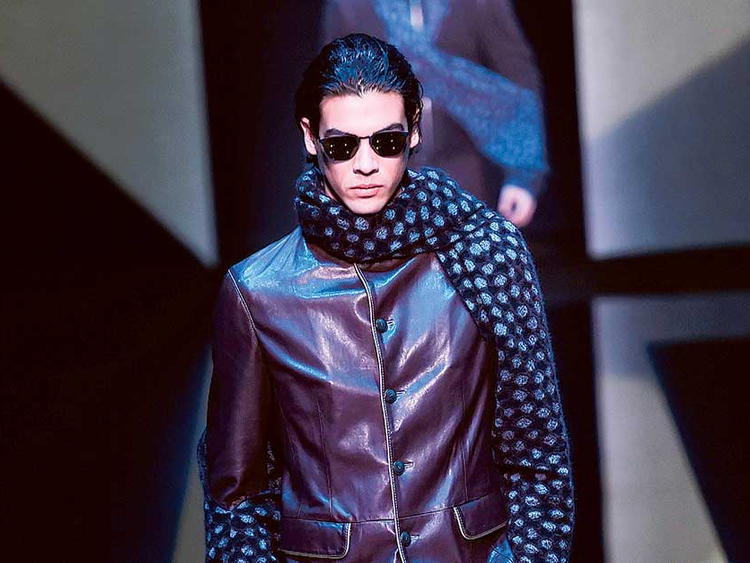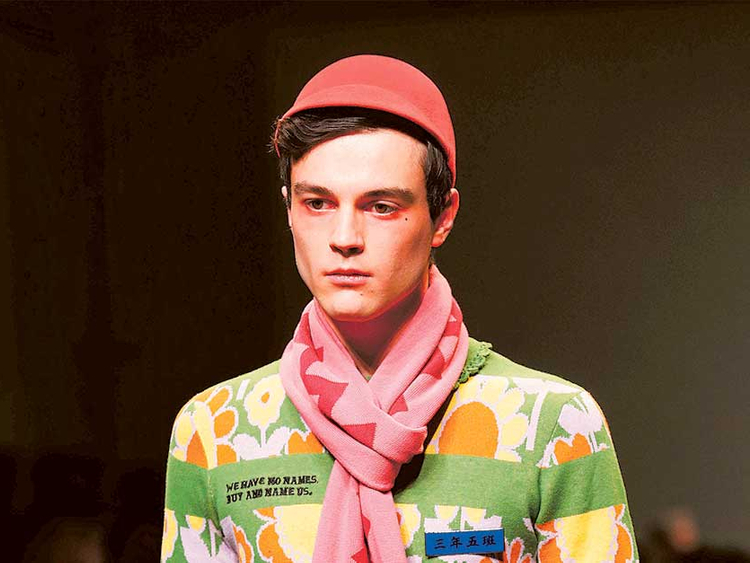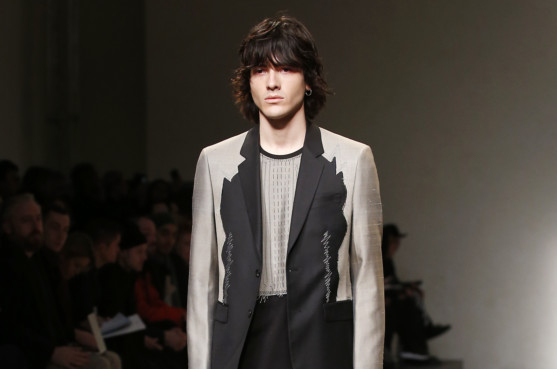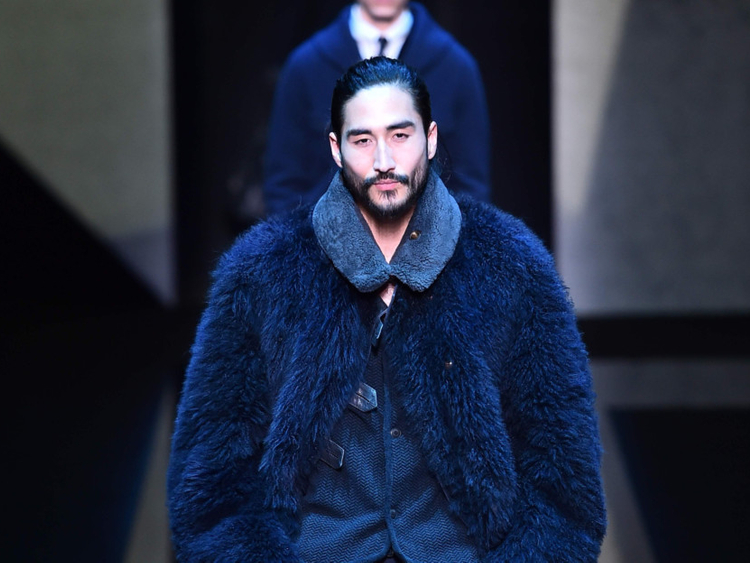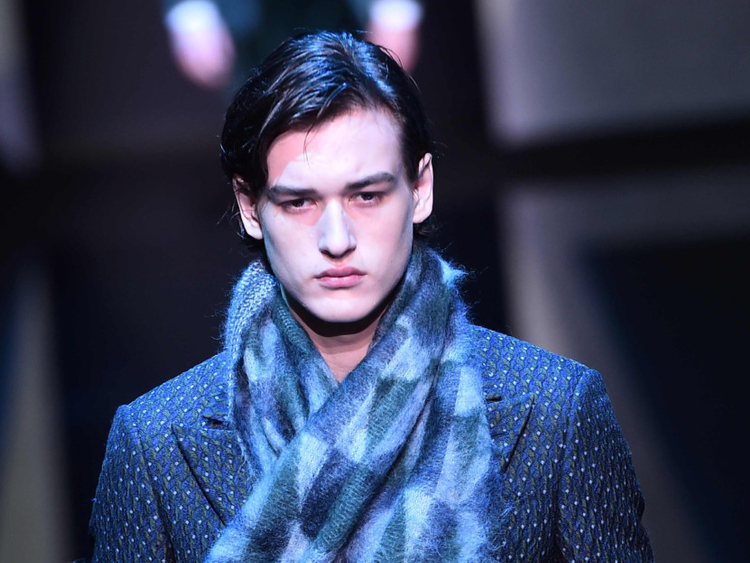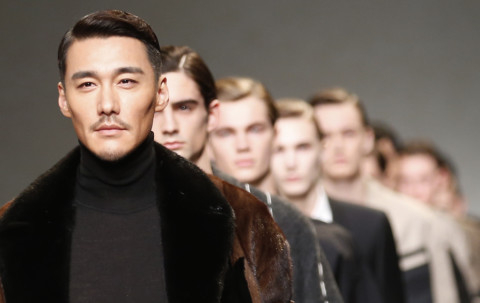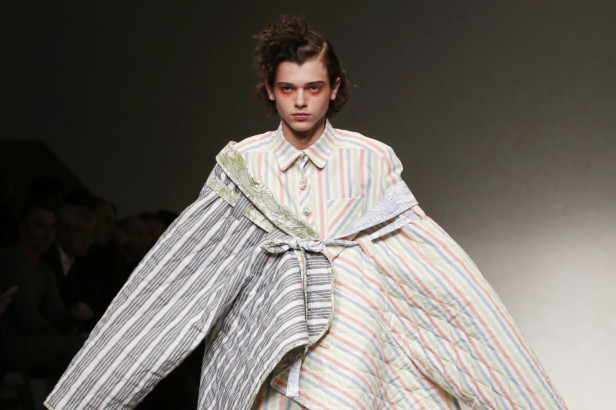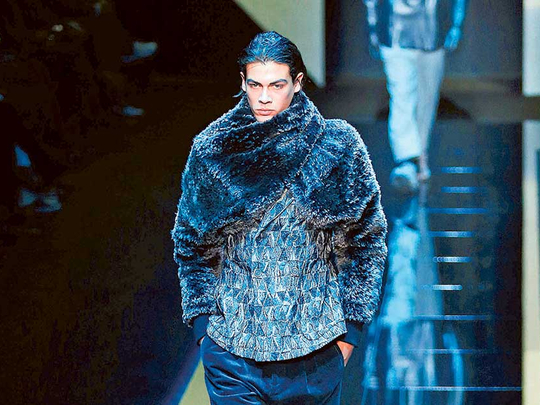
There have been lots of warm fuzzies on the Milan runway this season: shaggy fur, furry footwear, thick knits, big gloves, droopy caps, face-framing neck-warmers. All useful for hunkering down in turbulent times.
Four days of menswear previews for next winter and autumn at Milan Fashion Week ended on Tuesday with a focus on soft tailoring and comfortable looks.
Blazers tended to be long, and paired with loose-fitting trousers. Overcoats, if not furry, had fur collars. Shoes had big soles with fresh detailing like rubberized studs or built-in socks, but most of all tufts of adorable fur.
There was a nostalgic return to homey knitted gloves and caps. Designers also opted for a rough look with half-finished accents, big embroidery and some deconstruction.
Bags were big, ready for a quick get-away. Colors tended toward deeper urban shades of gray and black, with flashes of white, and some designers opted for color blocks.
Some highlights from the final day of Milan Fashion Week, which included previews by three Asian designers supported by the National Italian Fashion Chamber:
GIORGIO ARMANI
Giorgio Armani was the first among wrappers this menswear season.
Armani defined the silhouette of his easy tailored looks with a novelty: sleeve scarves that warm the arms and wrap across the chest. Armani opted for a generous variety, from fine knits in prints or contrast colors for sunny days when an overcoat might be too much, to chunkier furry versions.
The designer also brought back the tie and three-piece dressing for day, in soothing charcoals with a dark velvet double-breasted vest for a dandy look, finished with a narrow-brimmed Trilby hat.
Masculinity was projected in geometric patterns including triangular blocks on zip-up hoodies and softer alpaca pullovers. Hiking boots completed many looks and bags included satchels and doctor bags.
For truly cold days, there were large hooded coats and shaggy furs.
Armani continued a recent tradition of inviting up-and-coming designers to preview their collections in his theater. He has helped launched the likes of Stella Jean, Andrea Pompilio and Au Jour Le Jour in recent seasons.
This round, the choices were all Asian designers, which the head of the Italian fashion chamber, Carlo Capasa, said was deliberate.
“We wanted to give a sign of internationality, “ Capasa said. “Milan Fashion Week is an open week. We wanted to capture the energy from wherever it comes.”
YOSHIO KUBO
Yoshio Kubo’s manifesto was spare on the page: “I always focus on new details for outfits. I try to see outfits from different angles. I make a story for each season, which people never imagine.”
The US-trained designer, who has based his eponymous yoshiokubo line in Tokyo, gave the collection an East-meet-West feel, playing with layers and volumes and deconstructing familiar codes.
“I destroy the silhouette,” Kubo said backstage.
The looks would suit any self-respecting rocker. Kimono-style jackets are paired with drop-crotch trousers, while Western blazers are deconstructed by unzipping the shoulders, letting them slouch down shawl-like. Patchworks of white bandana patterns on black leather had a tattoo effect, reflected also in the temporary tattoos on some models’ necks.
The 42-year-old Japanese designer worked as an assistant designer for haute couture house Robert Denes in New York after graduating from Philadelphia University’s school of textile and science.
MOTO GUO
Malaysian designer Moto Guo was the first to concede that the Armani theater was not used to such “crazy” looks.
The 26-year-old designer’s collection looked like it walked out of a 1960s grammar school reader, with graphic lines, exaggerated details and soft shades alternating with garish patterns.
The show was built around the bucolic fashion story of a Japanese boy, depicted as a fanciful documentary about his life with an American voiceover.
“You see how he styles himself, what is his wardrobe,” the designer said backstage. “Sometimes you understand. Sometimes you have to guess.”
Exaggerated proportions defined the collection, including a huge rounded tie with zigzag detailing, jackets with mismatched external pockets and felt beanies in primary colors, some with propellers.
The final look featured a jacket with stiff, oversized arms that appeared fashioned from striped mattress pads.
CONSISTENCE
The Chinese label Consistence is keeping it raw for fashionable men next winter and fall.
Designers Fang Fang and Tien Lu base their brand in London, and their motto is balancing the casual and the formal.
The designers played with deconstruction. Suits featured what appeared to be a tailor’s basting stitching, and sewn-in pockets were external, not internal. White shirts incorporated dark jacket sleeves, and rough frenetic stitching on shirts and blazers suggested a seamstress had let herself go to a rock music soundtrack.
Jackets were missing lapels, which turned up, on their own, as scarves. Belted straps worked as apulets or trailed off arms and backs. A sporty two-tone fur sweatshirt and bomber jacket ensured the label’s luxury credentials.



